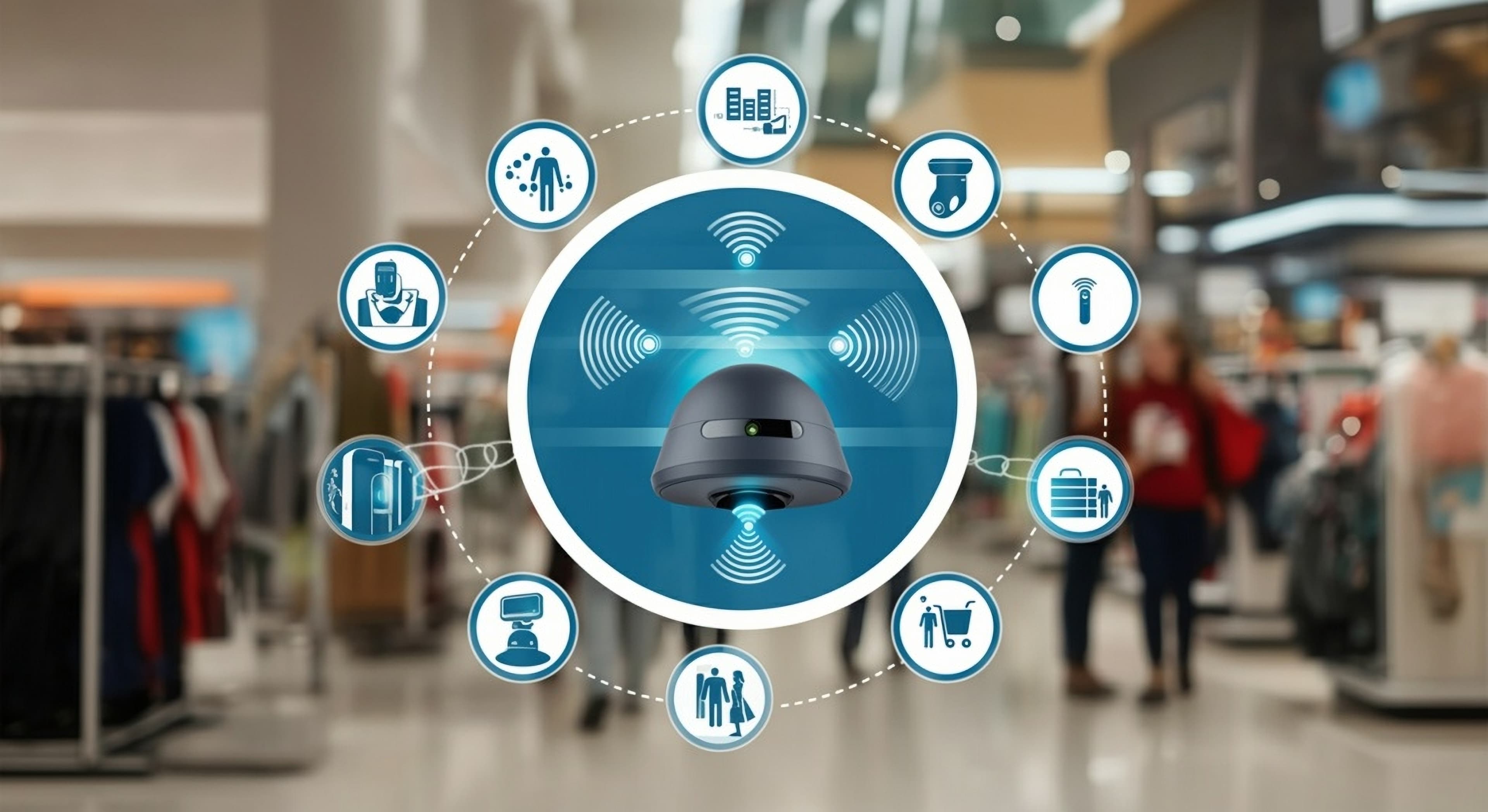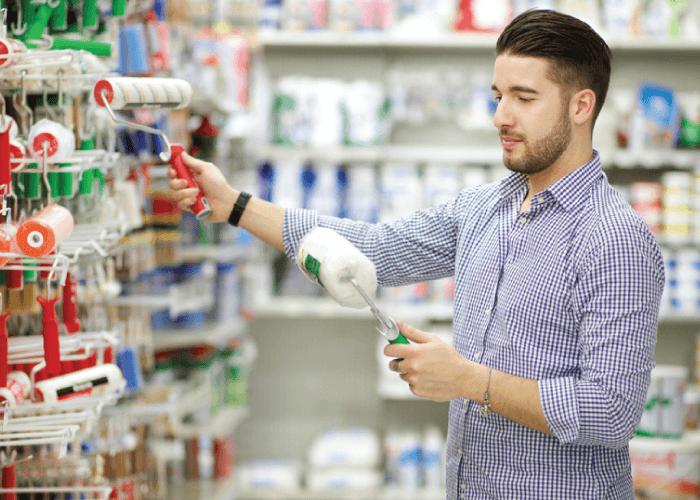The Importance of Accuracy in Customer Counting Technologies

On this page
The ability to accurately track customer traffic and behavior is crucial for any footfall-based business. Customer counting technologies, which include sensors, video analytics, and other tracking systems, play a pivotal role in helping retailers, event organizers, and public facilities understand foot traffic patterns, optimize staffing, and make data-driven decisions. However, these systems' value depends entirely on the accuracy of the data they provide. Inaccurate data can lead to costly mistakes, inefficiencies, and missed opportunities.

The Role of Customer Counting Technologies
Customer counting technologies are systems designed to measure the number of individuals entering, leaving, or moving within a physical space. These systems can range from simple mechanical turnstiles to advanced video analytics powered by artificial intelligence (AI). The core objective is to provide businesses with reliable data on customer traffic, which can be used for various applications such as:
Operational Efficiency: Retailers can adjust staffing levels based on traffic patterns, ensuring optimal service during peak hours and cost savings during slower times.
Space Optimization: Event organizers can assess how spaces are used, reallocating resources or altering layouts to improve visitor experiences.
Marketing and Sales Strategies: Businesses can analyze foot traffic data to evaluate the effectiveness of marketing campaigns and promotions.
Safety and Compliance: Ensuring that occupancy limits are not exceeded in public venues is essential for safety and regulatory compliance.
Accurate customer counting enables businesses to refine their operations, save on costs, and improve customer satisfaction. However, the reliability of these benefits is contingent on the accuracy and precision of the data.
The Cost of Inaccurate Data
Inaccurate data in customer counting technologies can lead to significant negative consequences for businesses. Even minor errors in counting can result in faulty analyses, leading to poor decision-making. The costs of inaccuracies can manifest in several ways:
Inefficient Resource Allocation: If customer counts are inaccurately low, businesses may understaff, leading to long wait times, poor customer service, and lost sales opportunities. Conversely, overestimating customer traffic can lead to overstaffing, unnecessarily increasing labor costs.
Misguided Marketing Strategies: Accurate foot traffic data is essential for evaluating the success of marketing campaigns. Inaccurate data may lead businesses to believe that a particular promotion or advertisement is more effective than it actually is, resulting in poor marketing investment decisions.
Poor Space Utilization: Inaccurate data on how customers move within a store or venue can result in poorly designed layouts, missed opportunities for product placement, or overcrowded areas that detract from the customer experience.
Regulatory Compliance Risks: For businesses required to adhere to safety regulations regarding occupancy limits, inaccurate data can lead to non-compliance. This can result in fines, penalties, and reputational damage, especially in environments such as stadiums, theaters, and public transport hubs.
Missed Opportunities for Data-Driven Insights: Customer counting technologies provide valuable insights into customer behavior. Inaccurate data undermines the ability to extract meaningful insights, preventing businesses from making informed strategic decisions.
Accuracy Challenges in Customer Counting Technologies
Achieving high levels of accuracy in customer counting technologies is often a lengthy process, as several factors can influence data reliability. Understanding these challenges is key to improving accuracy and ensuring the utility of customer counting systems.
Environmental Factors: Lighting, weather, and the design of entry points can all impact the accuracy of customer counting technologies. For example, glare from sunlight, shadows and reflections can confuse video-based systems, while crowded entryways can make it difficult for sensors to distinguish between individuals.
Sensor Limitations: Different types of sensors, such as infrared, thermal, and laser-based systems, have varying levels of precision depending on the application. Some technologies may struggle in environments with large traffic volumes or when individuals move erratically.
Complexity of Human Behavior: Human movement can be unpredictable, and factors such as group dynamics, the presence of children, or people carrying large objects can complicate counting. Video analytics systems often face challenges in distinguishing between overlapping individuals or groups moving closely together.
Counting Methodologies: The choice of counting methodology also plays a role in accuracy. For example, bidirectional counting (tracking customers as they enter and exit a space) may be more accurate than unidirectional counting, but it requires more sophisticated technology.
Data Processing and Algorithms: Many customer counting systems rely on advanced algorithms to process raw data from sensors and cameras. However, these algorithms are not foolproof. Errors in algorithmic interpretation, such as misidentifying objects as people or miscalculating footfall, can lead to inaccuracies.
Ensuring Accuracy in Customer Counting
To minimize inaccuracies and optimize the effectiveness of customer counting technologies, businesses must take several steps. The following strategies can help improve accuracy and ensure that the data produced by these systems is reliable:
Investing in Advanced Technologies: Technologies like AI and machine learning have revolutionized customer counting systems by allowing them to analyze vast amounts of data and adapt to complex environments. For example, AI-powered video analytics can differentiate between individuals, detect and track their movement, and account for variables such as lighting and occlusion.
Regular Calibration and Maintenance: Customer counting systems require regular calibration to maintain accuracy. Over time, sensors may drift or become less reliable due to wear and tear, environmental changes, or shifts in traffic patterns. Regular maintenance ensures that systems remain accurate and effective.
Testing in Real-World Conditions: Customer counting technologies should be tested in the actual environments in which they will be used. This helps identify potential sources of error and allows for adjustments to be made. For example, testing systems in busy shopping malls versus small retail stores can highlight differences in performance.
Data Validation and Cross-Referencing: Businesses should cross-check data from different sources to validate accuracy. For example, comparing foot traffic data from multiple counting points or using supplementary technologies like Wi-Fi or Bluetooth tracking can help corroborate the accuracy of the primary counting system.
Integrating Human Oversight: In some cases, human oversight may be necessary to verify the accuracy of customer counting technologies. Manual audits can be conducted periodically to compare system-generated data with actual counts, identifying any discrepancies and fine-tuning the system accordingly.
Adapting to New Challenges: As customer counting technologies evolve, businesses must adapt to new challenges. For example, the increasing use of face masks during the COVID-19 pandemic presented challenges for systems that relied on facial recognition to count customers. Similarly, businesses need to be ready to adjust for new factors that could impact data accuracy, such as evolving customer behaviors or changes in store layouts.
Making it Count
The importance of accurate data in customer counting technologies cannot be overstated. As businesses continue to rely on data-driven insights to make strategic decisions, the accuracy of the data collected by these systems will be a determining factor in their success. Inaccurate data can lead to inefficiencies, missed opportunities, and regulatory risks, while accurate data provides a foundation for operational excellence, enhanced customer experiences, and increased profitability.
By investing in advanced technologies, ensuring regular calibration and maintenance, and cross-referencing data from multiple sources, businesses can improve the accuracy of their customer counting systems and unlock the full potential of their data. As the technology continues to evolve, the ability to count customers with precision will become even more critical for businesses seeking to thrive in an increasingly competitive marketplace.
About the author:

Chris Hadjiyannis, Product Marketing Coordinator, RetailNext




